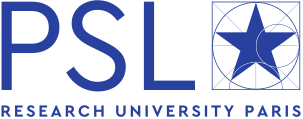The team is composed of researchers belonging to the PSL Art Schools (CNSAD, CNSMDP, Ensba, EnsAD, La Femis), to the ENS and EHESS. Medical institutions and laboratories (La Salpétrière CMRR Ile-de-France, CMRR-CoBTeK Nice, LMC- INSERM-UMRS894) and museums (Le Louvre, Musée national Picasso, Philharmonie de Paris, Musée des Confluences in Lyon) will collaborate with the program.
Bringing together medical scientists and doctors, psychologists, cognitive scientists, sociologists, experts of museums and other cultural institutions, art historians, film, theater and music specialists but also , musicians, visual artists, filmmakers, theater artists around the theme of « aging » the program will study three main themes:
Theme 1:
The place of the arts in the lives of seniors. In the context of an ongoing aging of the populations in developed countries the question of the renewed social function of arts, creativity and aesthetic experiences (which constitutes one of the basic assumptions of the CCS project) becomes an important issue. This first theme has already been inaugurated during the preparatory phase of the program, inaugurated with a workshop
in March 2015 at the ENS : “Aging@museum”. The aim was to bring together doctors, psychologists, and curators responsible for hosting special groups, specifically, elder people suffering from Alzheimer disease, a senile dementia producing memory loss and behavioral problems. Colleagues from the MoMA’s Alzheimer’s project: Making art accessible to people with dementia presented their experience. Since the fall of 2015 several such programs have indeed been experimented (Le Louvre, Musée national Picasso) or realized (Philharmonie de Paris), whereas others are still under consideration (Musée des Confluences, Musée national d’art moderne). In 2016, we will organize three one-day meetings, allowing those who run these programs and medical experts to compare their experiences and to exchange. The seminar will explore what kind of protocol would be fit to evaluate the psychological implications of such visits, for the patients and for the caregivers. Another issue is the function of the museum as a social “actor” and an “arena” of reflection to promote a positive, active and developmentally oriented view of ageing. We want to create a price, with the help of private patronage. One of the more technical developments of theme 1 will be an experimental eye-tracking study and exploring the effects of perceptual and cognitive impairments related to aging on the experiencing of paintings.
Theme 2: Aging and creating : how does age affect creation ?
In November 2016, this second theme will be explored through a colloquium co- organized by the Ecole Normale (N. Laneyrie-Dagen), the “Beaux-arts” (F.-R. Martin) and Musée national Picasso (E. Bouvard, curator and head of the Research) at the Académie nationale de Médecine. Involving American as well as European experts, art historians as well as doctors and physical therapists, it will deal with bodily and mental changes during the life, and the way they affect creation. We will address two main issues. First: how does the fact that (as a consequence of a radically new demographic trend) artists from very different generations work in the same time affect the aesthetic taste and the way the artist’s career develops? Second: which appreciation, and comprehension, can we have, of what is somewhat called the “late style” (late works) in an artist’s life?
The artistic participation of the CNSAD (Caroline Marcadé) and a partnership with Le Louvre will give us the opportunity for a practical session : a choreography by aging danseurs, prepared by a three weeks training within the framework of an AFDAS convention, will be performed in the Museum rooms and concluded by a dialogue where the choreographer (Caroline Marcadé) and the dancers will discuss what they’ve experienced, opening a reflection on age diversity and aging bodies on stage (movie and theater as well as dance).
Theme 3: The image of the ‘elderly’ reflected in the arts.
The research concerning this third theme is still in a preparatory phase: we are in the process of constituting a team convoking the various artistic fields and present forms of creation, in a cross-cultural (Western and non-Western world), but also an historical (comparative) perspective. The first research activities will start in January 2017.
